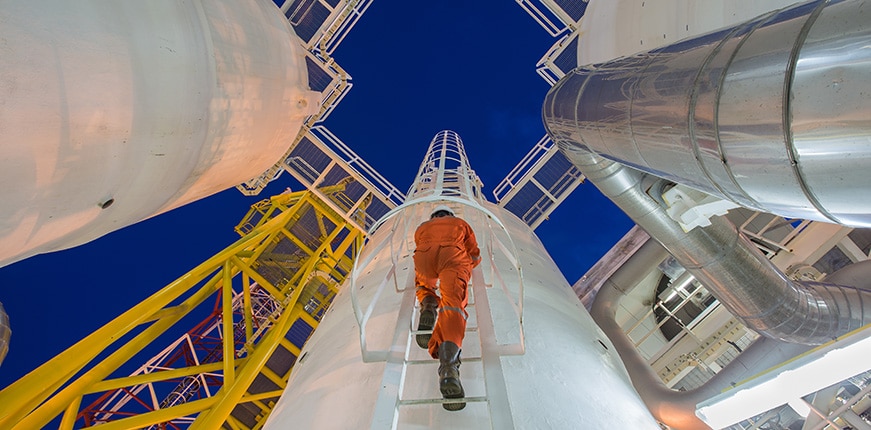
OSHA’s Fixed Ladder Fall Protection Deadline is Approaching
OSHA’s updated Walking-Working Surfaces Standard for General Industry, published November 19, 2016 (29 CFR 1910 Subpart D), includes fall protection provisions for fixed ladders that take effect November 19, 2018. Fixed ladders must be equipped with fall protection, and November 19, 2018 is a key date in determining what type of fall protection is required.
The fall protection provisions at 29 CFR 1910.28(b)(9) apply to a ladder if:
- The ladder is fixed; AND
- It extends more than 24 feet above the lower level; AND
- It is existing (erected before November 19, 2018); OR
- It is new (erected on or after November 19, 2018).
Existing ladders that extend more than 24 feet above the lower level must be equipped with a cage, well, personal fall arrest system or ladder safety system.
New ladders, including new replacement ladders or ladder sections on existing ladders, must be equipped with personal fall arrest system or ladder safety systems. These systems are defined by OSHA as follows:
- Ladder safety systems means a system designed to eliminate or reduce the possibility of falling from a fixed ladder. A ladder safety system usually consists of a carrier, safety sleeve, lanyard, connectors, and body harness. Cages and wells are not ladder safety systems.
- Personal fall arrest system means a system used to arrest an employee in a fall from a walking-working surface. It consists of a body harness, anchorage, and connector. The means of connection may include a lanyard, deceleration device, lifeline, or a suitable combination of these.
Another important date to keep in mind is November 18, 2036. On and after November 18, 2036, all fixed ladders that extend more than 24 feet above the lower level must be equipped with a personal fall arrest system or a ladder safety system. This means that existing ladders that are equipped with a cage or well must be replaced or must be modified by November 18, 2036 to replace the cage or well with the required fall protection system.
And don’t forget that each employee that is exposed to a fall hazard and uses personal fall protection systems must be trained by a qualified person regarding fall hazards and implemented fall protection measures as required by 29 CFR 1910.30.
If you have any questions regarding your facility’s compliance with federal or state OSHA regulations or need assistance with an applicability assessment, EHS compliance audit or training program, contact a VBA professional.
